Learn : Food & Nutrition
Grains for Dogs: Good or Bad, plus Best Options
Grain-free dog food is just that: any canine diet that is completely free of grains, including wheat, corn, rice, etc. It has become a popular choice for modern dog parents who want to feed their pups well, but is it really a better option for every dog? Are grains always the enemy, or is this a case of another fad diet? Further, is there any difference between good grains and bad grains?
Understanding the Role of Grains in Dog Diets
Grains have long been a topic of debate in the world of pet nutrition, but when chosen wisely and fed in the right amounts, they can offer a range of benefits for your dog’s health. Far from being “fillers,” many grains are nutrient-dense sources of energy, fiber and essential vitamins and minerals. Like any ingredient, they’re not one-size-fits-all—some dogs may thrive with grains in their diet, while others may have specific sensitivities or allergies. The key is understanding what grains provide and how they can support your dog’s well-being.
Benefits of Grains for Dogs
Grains such as brown rice, oats and millet offer a robust nutritional profile that contributes to your dog’s overall health. Here are some of the key benefits they bring to the bowl:
1. A Reliable Source of Carbohydrates and Energy
Carbohydrates provide a steady source of energy, particularly beneficial for active dogs. Whole grains digest more slowly than simple carbs, helping to sustain energy levels throughout the day without causing spikes and crashes.
2. Packed with Vitamins and Minerals
Many grains are rich in important micronutrients. Brown rice, for instance, contains:
-
Vitamin E, an antioxidant that supports immune health and skin integrity.
-
Magnesium, which aids in muscle and nerve function.
-
Phosphorus, essential for healthy bones and teeth.
These nutrients contribute to various systems in your dog’s body, from mobility to metabolism.
3. Insoluble Fiber and a Low Glycaemic Index
Whole grains like oats and millet are rich in insoluble fiber, which promotes healthy digestion by aiding regular bowel movements and supporting beneficial gut bacteria. The low glycaemic index of these grains helps maintain stable blood sugar levels, which is especially important for dogs at risk of diabetes or those with weight management concerns.
4. Essential Fatty Acids for Skin and Coat Health
Grains such as corn and brown rice contain linoleic acid, an omega-6 fatty acid that plays a crucial role in maintaining a shiny coat and healthy skin. While fats from animal sources are important too, grains can help round out your dog’s intake of essential fatty acids.
Wholegrains: A Nutrient Powerhouse
When it comes to choosing grains, wholegrains are a standout option. Unlike refined grains, which are stripped of their outer layers (and many nutrients), wholegrains retain their bran and germ—where much of the fiber, vitamins, and antioxidants are concentrated.
Wholegrains such as brown rice, millet, and steel-cut oats are associated with reduced risks of chronic disease in both humans and dogs. Thanks to their high insoluble fiber content, these grains promote a healthier digestive tract and help regulate blood sugar levels. Their slower digestion rate supports satiety, making them a smart inclusion in weight management diets.
Plus, wholegrains can play a role in:
-
Supporting cardiovascular health
-
Stabilizing energy levels
-
Promoting a healthy microbiome
About Grain-Free Diets for Dogs
In recent years, grain-free dog foods have grown in popularity—often driven by concerns about food sensitivities or a desire to mirror human dietary trends. While some dogs may benefit from these diets, it’s important to understand what grain-free really means, what ingredients are used instead of grains, and what current research suggests about their impact on canine health.
What Are Grain-Free Dog Foods?
Grain-free dog foods are formulated without traditional grains like wheat, corn, rice, barley, or oats. Instead, manufacturers substitute these grains with other carbohydrate sources such as:
-
Potatoes
-
Sweet potatoes
-
Lentils
-
Chickpeas
-
Peas
Although labeled “grain-free,” these diets are not necessarily low in carbohydrates. In fact, many grain-free formulas may have comparable—or even higher—carb content than grain-inclusive foods due to the starches used to replace grains. That’s why it’s essential to read ingredient labels carefully and evaluate your dog’s specific energy and dietary needs.
The Grain-Free Debate and Health Concerns
The popularity of grain-free diets has led to a significant conversation among pet owners and veterinarians—especially after the U.S. Food and Drug Administration (FDA) began investigating a potential link between grain-free diets and canine dilated cardiomyopathy (DCM), a heart condition. While the exact cause is still under investigation, the concern centers on the use of legume-heavy formulations (like peas, lentils, and chickpeas) that may impact how dogs metabolize nutrients like taurine, an amino acid critical to heart function.
Although no definitive cause-and-effect relationship has been established, the investigation underscores the importance of feeding a well-balanced, evidence-based diet rather than assuming that “grain-free” automatically equals “healthier.”
Allergies and Sensitivities: Do Grains Play a Role?
Food allergies in dogs are often misunderstood. While grains are commonly blamed, animal proteins—especially beef, dairy, and chicken—are actually more frequent allergens. True grain allergies are relatively rare, though some dogs may experience digestive upset or sensitivities to certain types of grains.
In cases where a dog shows signs of food sensitivities (such as itching, chronic ear infections, or gastrointestinal issues), an elimination diet supervised by a veterinarian is the gold standard for identifying the trigger. Both grain-inclusive and grain-free diets can play a role in this process, but it’s important to base changes on clinical symptoms—not assumptions.
Common Alternatives: Gluten-Free and Raw Diets
For pet parents exploring options beyond traditional grain-inclusive formulas, there are other alternatives on the market:
-
Gluten-Free Diets: These diets exclude gluten-containing grains like wheat, barley, and rye but may still include gluten-free grains such as rice or oats. They’re suitable for dogs with diagnosed gluten sensitivity (which is uncommon) or for owners who prefer to avoid gluten for other reasons.
-
Raw Diets: These typically focus on uncooked meat, bones, and organs, sometimes supplemented with fruits and vegetables. Proponents claim benefits such as shinier coats, healthier teeth, and improved digestion. However, raw feeding comes with risks, including bacterial contamination, nutritional imbalances, and safety concerns—especially if not formulated by a veterinary nutritionist.
What are the Best Grains for Dogs?
Not all grains are created equal. When thoughtfully selected, certain grains can offer valuable nutrients, support digestion, and enhance your dog’s overall health. Here’s a closer look at some of the most beneficial grains commonly used in high-quality dog foods.
Brown Rice: A Healthy and Nutritious Choice
Brown rice is a staple in many premium dog food recipes for good reason. Unlike white rice, brown rice retains its nutrient-rich bran and germ layers, offering:
-
Insoluble fiber to aid digestion
-
Essential minerals such as magnesium and phosphorus
-
Vitamins like B vitamins and vitamin E
-
A source of linoleic acid, an omega-6 fatty acid that supports healthy skin and coat
Brown rice is also highly digestible, making it a gentle option for dogs with sensitive stomachs.
The Benefits of Oats in Your Dog’s Diet
Oats are another grain that stands out for their nutritional value and hypoallergenic profile. They provide:
-
Soluble and insoluble fiber to support gut health and stable blood sugar levels
-
Plant-based protein
-
Beta-glucans, which may help boost immune function
-
B vitamins and zinc to support skin and coat health
For dogs with wheat sensitivities, oats are a gentle and nourishing alternative.
Other Notable Grains: Quinoa and Barley
-
Quinoa is technically a seed, but it's often grouped with grains thanks to its use and nutritional makeup. It’s a complete protein, meaning it contains all nine essential amino acids—rare for a plant-based ingredient. It also offers fiber, magnesium, and antioxidants.
-
Barley is a hearty, fibrous grain known for its digestive benefits and low glycaemic index. It contains selenium, iron, and niacin, making it a solid choice for supporting metabolic and immune health.
These grains, when used appropriately, can round out a dog's diet with valuable nutrients and long-lasting energy.
Grains in Nom Nom Dog Food
At Nom Nom, we believe in using ingredients with a purpose—including carefully chosen grains that bring both flavor and functional benefits to our fresh dog food recipes.
Our Turkey Fare and Lamb Pilaf recipes, for example, feature brown rice, a grain known for its digestibility, nutritional density, and ability to support healthy digestion. We opt for grains like brown rice because they’re:
-
Naturally gluten-free
-
Rich in vitamins, minerals, and essential fatty acids
-
Gentle on most dogs' stomachs
We avoid high-gluten grains like wheat and steer clear of corn and soy, which may cause issues for dogs with sensitivities and offer limited nutritional value compared to more functional alternatives.
At Nom Nom, every ingredient we include—grains included—must meet our high standards for quality, digestibility and nutritional value.
Make Meal Time Exciting With Nom Nom
At Nom Nom, we’re committed to delivering high-quality, thoughtfully formulated meals for your dog. Each recipe features real, whole ingredients—including beneficial grains like brown rice—that are cooked fresh and tailored to your dog’s nutritional needs.
From healthy digestion to shiny coats and good energy, the benefits of balanced, grain-inclusive meals speak for themselves.
Ready to give your dog the wholesome nutrition they deserve?
Explore our recipes, including the fan-favorites Turkey Fare and Lamb Pilaf, and start your trial today. Vet-developed, gently cooked dog food, delivered to your door—because your pup deserves the best.


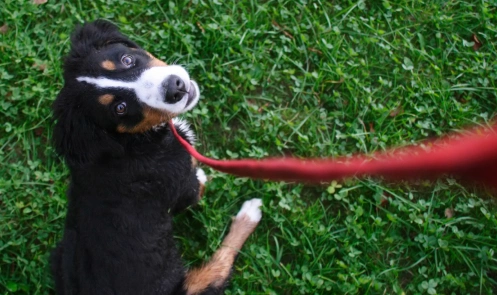
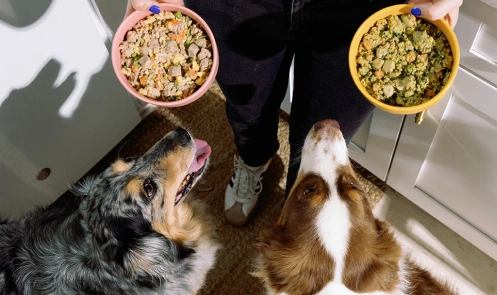
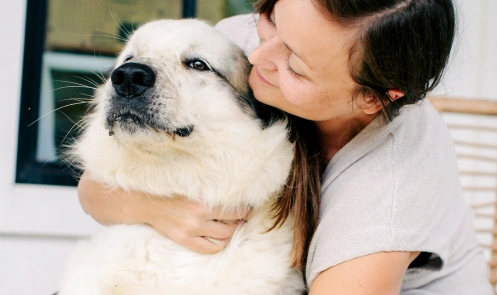
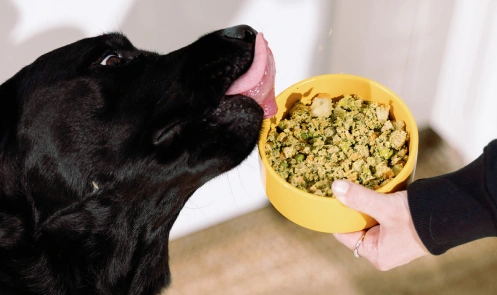
 Gluten And Grain Free
Gluten And Grain Free
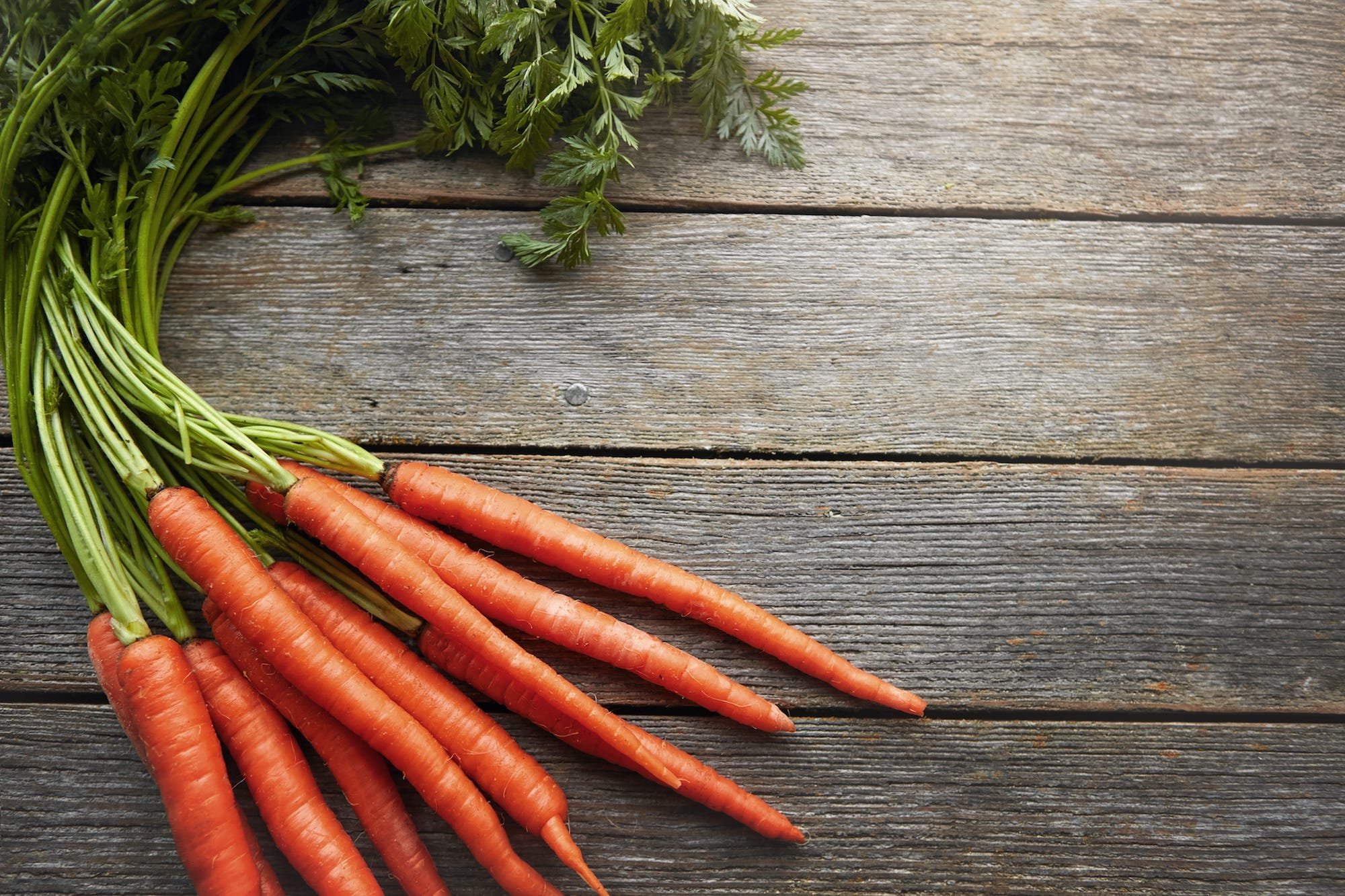 What Is Nom Nom Nutrient Mix?
What Is Nom Nom Nutrient Mix?
 Microbiome And Pet Health
Microbiome And Pet Health
 Microbes in the Dog Gut
Microbes in the Dog Gut